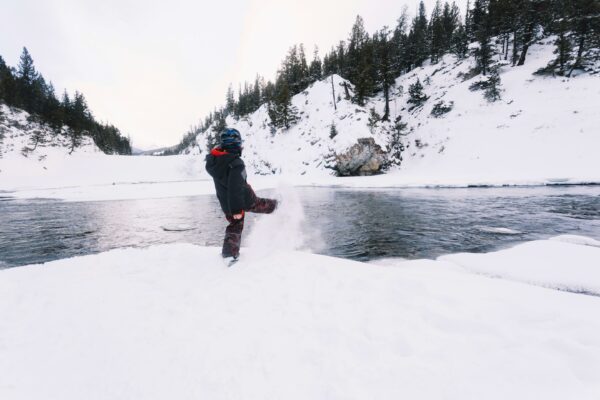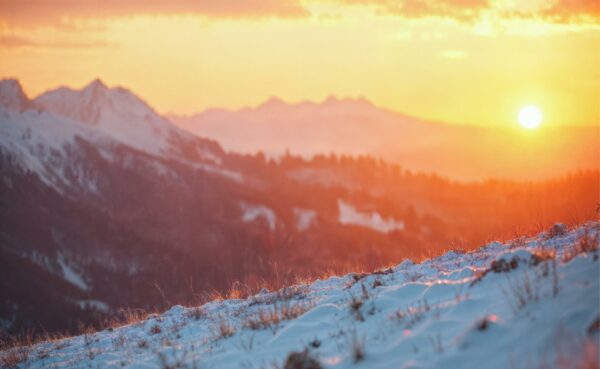Introduction
Two years in the middle of Himalayas will be something like this: icis winds blowing through the pine trees, the snow under the feet, the peaks rising on the horizon through the morning fog. This is Kedarkantha, a snow trek where you really seem to be walking inside a picture-postcard alive. Being situated in the Garhwal Himalayas of Uttarakhand this trek combines adventure and calmness, which is something that can attract many tourists. It’s the sort of trek that isn’t merely a tick on the bucket list of trekking destinations—Kedarkantha is the destination that marks you; it beckons novices and the professional climber.
But don’t be deceived by the pristine beauty—it takes more than a warm jacket and a GPS to tackle the relentless cold and altitude of Kedarkantha successfully. Adventure in the wilderness demands foregoing creature comforts, embracing arduous climbs, and preparing like a pro. What you carry, how you pack, when you go, and how well you prepare all directly influence how your Kedarkantha trekking essentials unfold.
In this guide, we dive into the nitty-gritty of trekking Kedarkantha—the ultimate preparation manual to ensure you’re not just ready but reveling in every frostbitten yet fulfilling step.
Why Everyone’s Buzzing About Kedarkantha
Not all Himalayan treks are created equal, and if you’ve heard the buzz around Kedarkantha, know this: it’s entirely deserved. Here is how this trek has ensured that is featured at the top of the list for those who love adventure.
That is, the easiness to access the Kedarkantha is one of the factors that makes it most attractive. Even though climbing some of these peaks is for the most experienced climbers perhaps having a decade of climbing, Kedarkantha does not leave the beginners totally high and dry but gives them a tiny peek into the beauty of such treks. Standing tall at 12,500 fee, the peak offers breathtaking views of Swargarohini, Bandarpoonch and Black Peak which is really a beautiful sight for the soul and almost seems out of place and overcompensating for the trek’s moderate exertion. Nothing could be compared with approaching nature as it is, without any interference, smooth and beautiful, vast and open.
Then there’s the trail itself—a magical sequence of dense pine forests, pristine snowfields, frozen streams, and quiet meadows, all made more enjoyable when you’re well-prepared with your Kedarkantha trekking essentials. You’ll pass solitary woods that exude mystery, stumble upon clearings bathed in amber sunlight, and—if you’re traveling in winter—find yourself amidst snowflaked campsites straight out of a fairytale. Simply put, Kedarkantha isn’t just a trek; it’s an escape, a timeout from frantic city life, a chance to recalibrate amidst the mountains’ silence.
Now, let’s talk versatility. Kedarkantha is the trek for all seasons (except perhaps the rainy spell of the monsoon). Whether you crave snowy terrains, blooming wildflowers, or crisp autumn landscapes, Kedarkantha tailors itself to your preferences. Here’s a closer look at what each season brings:

The Best Time to Visit Kedarkantha: A Seasonal Guide
Winter Magic (December to March): A Snow Wonderland
Winter is Kedarkantha’s pièce de résistance. Between December and March, the trail dons a pristine white sheet of snow, and the pine trees, laden with frost, give the landscape an otherworldly charm. Campsites gleam under starlit skies, their brightness amplified by the icy terrain. It’s cold—biting cold—with nighttime temperatures often diving to an unforgiving -10°C. But every frosty breath you take feels worth it as you ascend glittering trails punctuated by surreal vistas.
Late November: The Secrets Before Crowds
Just before the full brunt of winter settles, Kedarkantha wears a more subdued snow cover. The trails are quiet, fresh powder begins to accumulate, and trekkers can enjoy the remoteness without the crowds that begin their influx in December. If solitude appeals to your trekking heart, this is your season.
Spring Vibes (April to June): The Floral Festival
Pastel meadows dotted with vibrant wildflowers emerge as the snow retreats in spring. Rhododendrons light up the trail with their deep reds and pinks, while jagged peaks add a reminder of winter’s long shadow. This is the best time for trekkers seeking a pleasant experience—warm days, clear skies, and colorful landscapes.
Monsoon Blues (July to September): Trekker’s Dilemma
The monsoon is where Kedarkantha shows a different face but not necessarily an approachable one. Heavy rains, slippery trails, the looming threat of landslides—this is Kedarkantha’s least forgiving season. While the hills are lush and green, venturing out can be risky and unrewarding.
Autumn Elegance (October to November): Crystal-Clear Adventure
Autumn is quietly glorious on this trek. It isn’t loud, with no snowfall yet to transform the landscape; instead, vibrant foliage and crisp air become the trek’s trademarks. Coupled with clear skies, it’s an ideal time for those interested in unobstructed summit views.
Pack Light. Pack Right: The Absolute Packing Essentials
Packing for the Kedarkantha trek is a calculated balancing act. Every gram you carry works for or against you in the process. It’s not about just cramming all sorts of things and chucking them into the backpack, it is about effective packing. Let’s break it down layer by layer:
Clothing: Stay Warm. Stay Agile.
The golden rule? Layering is everything.
- Base Layers: These are your comfort zone. Thermals are non-negotiable, acting as a second skin that keeps moisture at bay while locking in warmth. Merino wool or synthetic quick-dry materials are your best friends.
- Insulating Layers: A cozy fleece or lightweight down jacket provides the much-needed insulation to fend off those Himalayan chills. Carry extra layering options for freezing nights at camp.
- Outer Shell: Waterproof, windproof jackets and pants are crucial—because surprise snowstorms don’t send you invitations. Opt for breathable fabric to prevent overheating during strenuous ascents.
- Accessories: Keep extremities protected using thermal gloves, insulated socks, woolen caps, and even a balaclava for those icy wind blasts that sting your face more than words ever could.
Footwear: Love Your Feet
The Kedarkantha trek requires major foot mileage, so what you put on your feet makes or breaks the trek:
- Trekking Shoes: Invest in waterproof, high-ankle boots that offer grip and durability. Breaking your boots in before the trek is as important as bringing your compass.
- Socks: Alternate between thermal socks for nighttime warmth and moisture-wicking pairs to combat sweat during the day. Wool-blend fabrics work wonders.
- Gaiters and Crampons: Post-snowfall, they’re indispensable. Snow-filled boots? No thanks.
Gear Checklist: Your Survival Companions
- A 40–55L Backpack: With cushioned straps, a waist belt, and a rain cover for when the clouds cry.
- Sub-Zero Sleeping Bag: Whether you rent or own, ensure you’re packing one rated between -5°C to -10°C.
- Trekking Poles: Unless your knees are mirrors of Hercules’ strength, get these. Adjustable poles lend balance and take stress off your legs.
- Flashlight/Headlamp: Because darkness happens at 5 PM in the mountains. Bring spare batteries (electronics fail in low temps).
- First Aid Kit: Painkillers, blister tape, antibiotics, altitude sickness meds—the works. “
Fueling Up: Nutrition on the Trek
The sharp chill of Kedarkantha drives hunger, and trust us—cake and coffee won’t magically appear. Staying energized and hydrated is critical!
- Snacks: Trail mix, nuts, dark chocolate bars, and peanut butter give quick calories. Avoid greasy foods—they slow you down.
- Hydration: A thermos of warm water decimates the cold while battling dehydration. Carry a water purification system or tablets; you’ll find natural streams often.
Money-Saving Tips Without Compromising Quality
Drop that wallet for a second. Kedarkantha doesn’t need to drain your savings. Here’s how:
- Rent high-cost gear near the base (be it Sankri or other rental hubs). Gear like crampons or sub-zero sleeping bags don’t need to disrupt your budget.
- Borrow from fellow trekkers, friends, or rent second-hand gear online. Enthusiastic communities are usually ready to lend a hand—or a backpack.
Altitude Challenges: Know the Risks
High altitudes mean low oxygen. At 10,000+ feet, altitude sickness lurks without warning. Be aware—headaches, nausea, dizziness could signal Acute Mountain Sickness (AMS). Remedies:
- Slow and steady—a deliberate pace helps your body acclimatize.
- Hydrate continuously. Warm liquids go a long way in maintaining energy levels.
- Pause for acclimatization breaks during extended sessions.
Responsible Trekking: Safeguard Nature’s Gift
Kedarkantha is ethereal, yes—but it’s fragile too. Respect the spaces you occupy:
Pack reusable bottles (say no to single-use plastics).
Follow Leave No Trace principles—what comes with you goes back with you.


Conclusion
Kedarkantha isn’t a trek. It’s a calling—a beckoning wilderness and stillness we lose ourselves to and find ourselves within. Whether you’re gazing at the sun rising over frozen terrain or savoring piping hot Maggi in the biting cold, every moment on Kedarkantha feels surreal. So pack your Kedarkantha trekking essentials with Global Events Travels and leave behind your worries—this journey is not just about scaling peaks but also rediscovering yourself along the way.
The Himalayas await. Are you ready?
FAQ's
However, the best time to carry out the Kedarkantha trek is from December to April though the best time is in winter. During this period, the entire trail is filled with snow which is unblemished and provides astounding beauty on the trek. But it can also be done in summer and autumn if one wants to have a great view of greenery in the valley and clear blue sky
Of course, the Kedarkantha trek is easy trekking and it’s not even the best for fresh trekker or beginners. Because of the above said following reasons this trek is perfect for those who are attempting the trek for the first time moderate difficulty level, well-defined trails, and gradual ascend. Still, some recommendations can be made to avoid discomfort like main preparation, physical training and climatic habituation.
It takes 4-6 days of the window to complete the Kedarkantha trek through maximum trail routes. The total distance that time will be covering the round trip is roughly 20 kilometers out of which 12.5 kilometers is our one side trek up to Har ki Pauri starting and ending point at Sankri village.
It has panoramic view of snow clad Himalayan ranges lovely pine forests, colourful meadows and Juda Ka Talab, a high altitude lake. Kedarkantha Trek is exposed to snow clad peaks and valleys, The highest point of the camp at present 3800m has got the most picturesque rising of the sun and setting panorama over the snow capped peak.
The list includes thermal wear, a down jacket, gloves, trekking shoes, a waterproof backpack, trekking poles, sunscreen lotion, sun glasses and a first-aid kit. Another essential item is a sleeping bag Together with some food and drinks in bottles or hydrating packs. Hikers in winter should carry microspikes or gaiters when moving on the snow.
Kheerganga Trekking Essentials: Gear Up & Save Big! Discover must-have gear for your Kheerganga adventure and enjoy exclusive discounts today. Contact us now to plan your perfect trek!

